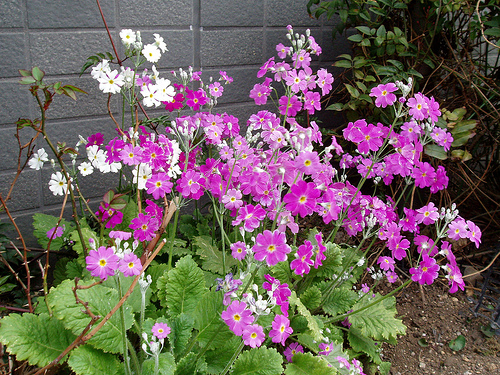Dangers of the Poisonous Primrose:
Primula obconica is considered to be poisonous because it has leaves that contain a poisonous substance. This organism is harmful when touched or consumed.
THE POISON:
Primula obconica has secretory trichomes present in the
foliage that have a skin-irritant benzoquinone derivative,
primin. The secretion from this plant is sticky. Primin is a
contact allergen. This means that once the granular hairs have
been touched, primin can cause a rapid onset of skin irritation.
The affected area usually becomes reddened, swollen, and
blistered with spotty or linear discolored streaks. If benzoquinone comes in contact with the eyes, it can cause
reddening of the cornea and iris. Sometimes this reaction can be
deadly, but the chance of this intoxication happening is rare.
When working in
a habitat where this
species is usually found, it is important to wear gloves as
protection. Simply removing dead leaves or working with plants
around Primula obconica can cause an individual to come
in contact with primin (Burrows and Tyrl, 2001).
 Allergen-active benzoquinones is also a
Allergen-active benzoquinones is also a
characteristic in the Orchidaceae
family.
Members of this family include
Vanilla planifolia (Vanilla) and
Dendrobium officinale (T'ieh-p'i Shih-hu).
obconica have been modified so when they are
touched they will not cause itching?
ex. Touch Me
Figure 1. Structure of Primin
The image is modified from Toxic Plants of North American.
TREATMENT:
1. Use an anti-inflammatory or antihistamine drug.
2. Avoid further contact with Primula obconica.
Most dermatologists would recommend the application of a 25% ammonia
solution to the area that is being affected within 15 minutes of
reaction (Burrow and Tyrl, 2001).
![]()
Next, visit the Gallery
to see more amazing pictures
and learn interesting facts about the Primrose family.
Back to the home page.

